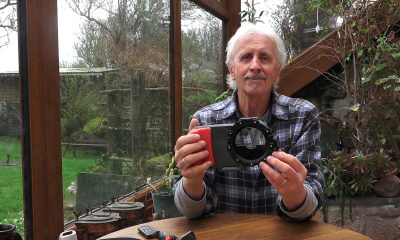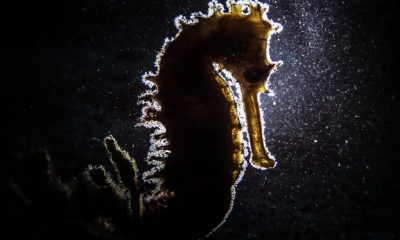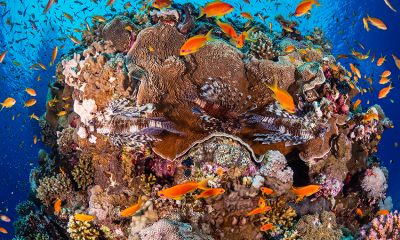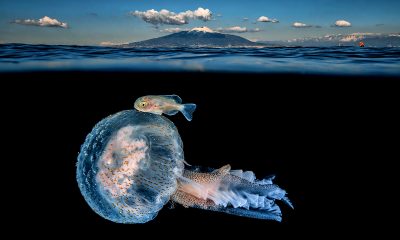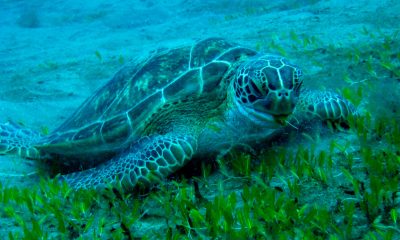News
Announcing the winner of Scubaverse.com’s Photo of the Year 2015
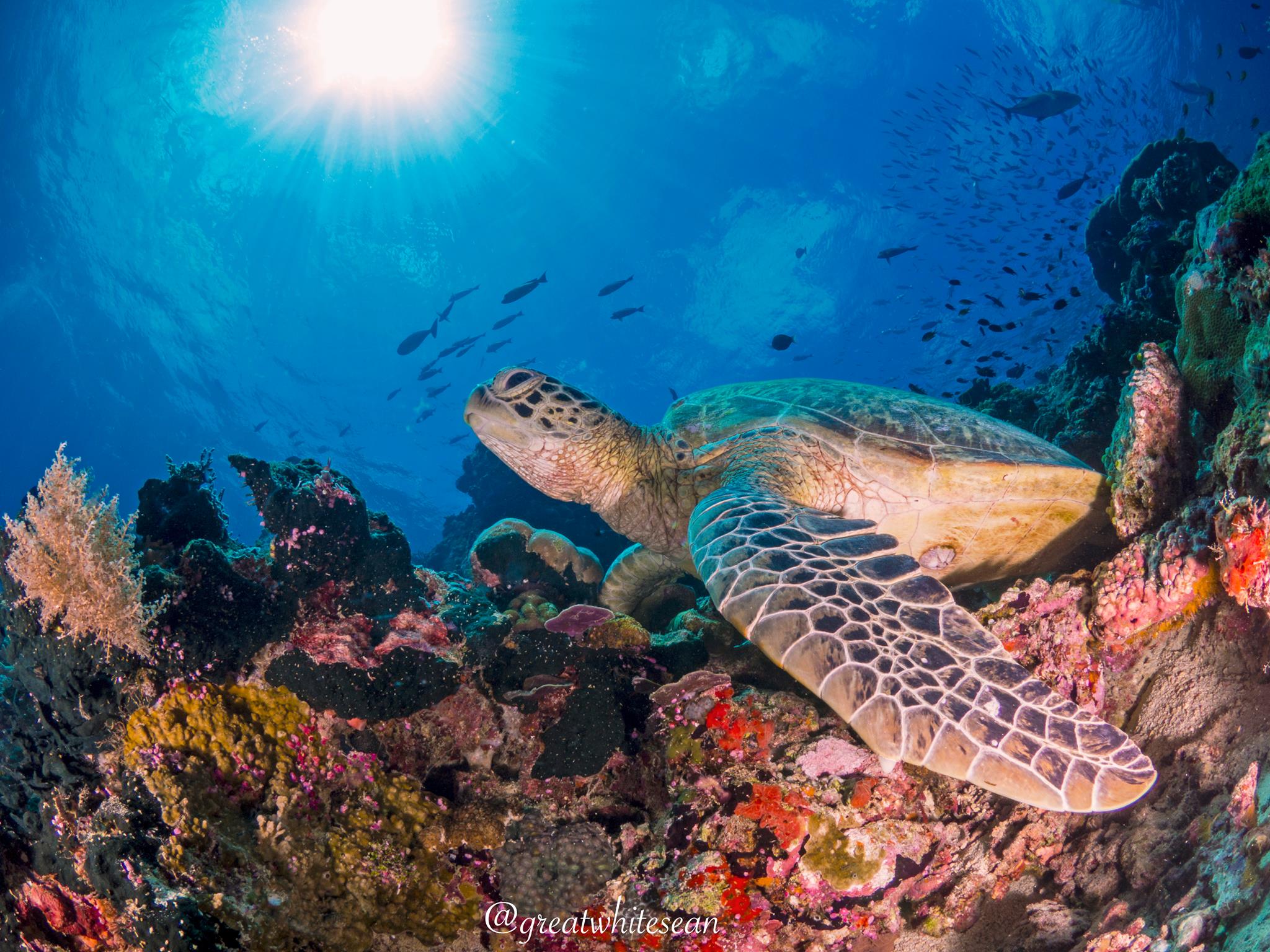
It’s exciting times here at Scubaverse.com, as the photo of the year 2015 is about to be announced.
Just in case you haven’t been following our monthly photography competitions, the rules are quite simple: any underwater photographer can enter. You can submit up to three pictures each month. This can be wide angle or macro and taken on any camera, compact or DSLR. The pictures can be recent or taken several years ago. It’s also really nice if the photographer can add a brief description explaining where the picture was taken, camera settings etc. This helps me understand how and why you took the picture in the first place.
At the end of each month I ‘simply’ choose a winner from all the entries. I’m not biased in any way, and it’s judged on a variety of factors, including composition, subject, level of difficulty etc. I also look at the technical aspects like focus, lighting, contrast and post editing skills. I honestly didn’t realise how tough this job would be – there were so many stunning images submitted in 2015.
The winning photographer gets his/her picture displayed on Scubaverse.com’s homepage for the duration of the month, wins a £100 voucher towards a Scuba Travel Red Sea liveaboard workshop with Duxy, and gets a copy of Vivid-Pix’s excellent post editing software. The winning picture also appears in our Photo of the Month Winners Gallery and is used as the background image on Scubaverse.com’s Facebook, Twitter, Google+ and Tumblr pages.
In addition to all this, each month’s winning picture is also entered into our Photo of the Year Contest. The winner of Photo of the Year will pick up some serious prizes – over £1,000 worth of dive gear – donated by Mares, one of the world’s leading diving equipment manufacturers, and a further £150 voucher off a Red Sea liveaboard photo workshop with Duxy, courtesy of UK-based dive tour operator Scuba Travel.
Because we only began the monthly competitions in March last year there are a total of 9 pictures this time around (we also missed May due to the site having a major redesign).
So if you didn’t know about the competition rules and the prizes, now you do!
If you are wondering why I have been asked by Dave, the editor of Scubaverse.com, to judge your pictures, well in brief I have been working in the diving industry for more than 25 years. I started out as a diving instructor running recreational and technical courses and was then introduced to underwater photography. I have managed my own photography business at Taba Heights in Egypt, owned a retail shop in the UK and regularly write articles and take underwater photographs for magazines. I hope this gives me some credibility to judge your pictures.
For Photo of the Year we have invited some other well-known underwater photographers to be on the judging panel. I didn’t think it would be fair for me to choose a winner on my own. I also didn’t want anyone to think the result had been rigged!!! As we are giving away a £100 voucher for Duxy’s Red Sea liveaboard photography workshops each month it’s only right that we ask him to be on the panel. Nick Robertson-Brown, who owns Frogfish Photography with his wife Caroline and who also writes regularly for Scubaverse.com, completes the esteemed line up.
Duxy, Nick and I individually looked at each picture and chose a top three. From the top three images we then thrashed it out until we finally agreed on one overall winner.
I’m very pleased to announce that the winner of Scubaverse.com’s Photo of the Year 2015 is Sean Chinn’s turtle picture titled ‘sunbathing’. This is a superb wide angle image of a green turtle sitting on the reef at Sipadan Island in Malaysia. I really liked the angle at which Sean took the picture (below the subject and shooting upwards), the reef looks healthy and there’s lots going on in the background including clouds and sunshine. Well done Sean, I hope to see more of your images in 2016.
I would like to give a huge thank you to Mares for providing the superb prize, not forgetting Scuba Travel and Vivid-Pix for the monthly donations. I’m sure 2016 is going to be bigger and better. Judging by the amount of entries in January’s competition I’m going to have my work cut out!
You can enter Scubaverse.com’s Photo of the Month Contest here. The contest generally runs from the 5th to the 25th of each month.
Blogs
Northern Red Sea Reefs and Wrecks Trip Report, Part 2: Wall to Wall Wrecks

Jake Davies boards Ghazala Explorer for an unforgettable Red Sea diving experience…
The second day’s diving was a day full of wreck diving at Abu Nuhas, which included the Chrisoula K, Carnatic, and Ghiannis D. The first dive of the day was onto the Chrisoula K, also known as the wreck of tiles. The 98m vessel remains largely intact where she was loaded with tiles which can be seen throughout the hold. The stern sits at 26m and the bow just below the surface. One of the highlights of the wreck is heading inside and seeing the workroom where the machinery used for cutting the tiles are perfectly intact. The bow provided some relaxing scenery as the bright sunlight highlighted the colours of the soft coral reef and the many reef fish.

Following breakfast, we then headed to the next wreck, which was the Carnatic. The Carnatic is an 89.9m sail steamer vessel that was built in Britain back in 1862. She ran aground on the reef back in 1869 and remains at 27m. At the time, she was carrying a range of items, including 40,000 sterling in gold. An impressive wreck where much of the superstructure remains, and the two large masts lay on the seafloor. The wooden ribs of the hull provide structures for lots of soft corals, and into the stern section, the light beams through, bouncing off the large shoals of glass fish that can be found using the structure as shelter from the larger predators that are found outside of the wreck.

The final wreck at Abu Nuhas was the Ghiannis D, originally called ‘Shoyo Maru,’ which was 99.5m long and built in Japan back in 1969 before becoming a Greek-registered cargo ship in 1980. The ship then ran aground on the reef on April 19th, 1983, and now sits at the bottom at a depth of 27m. Heading down the line, the stern of the ship remains in good condition compared to the rest of the hull. The highlight of the wreck, though, is heading into the stern section and down the flights of stairs to enter the engine room, which remains in good condition and is definitely worth exploring. After exploring the interior section of the ship, we then headed over to see the rest of the superstructure, where it’s particularly interesting to see the large table corals that have grown at the bow relatively quickly considering the date the ship sank. After surfacing and enjoying some afternoon snacks, we made sure everything was strapped down and secured as we would be heading north and crossing the Gulf of Suez, where the winds were still creating plenty of chop.

The next morning, it was a short hop to Ras Mohammed Nature Reserve for the next couple of days of diving. The 6am wake-up call came along with the briefing for the first site we would be diving, which was Shark & Yolanda. The low current conditions allowed us to start the dive at Anemone City, where we would drift along the steep, coral-filled wall. These dives involved drifts, as mooring in Ras Mohammed wasn’t allowed to protect the reefs. As a dive site, Shark & Yolanda is well-known and historically had a lot of sharks, but unfortunately not so many in recent years, especially not so early in the season. However, there was always a chance when looking out into the blue.

The gentle drift took us along the steep walls of the site, with plenty of anemone fish to be seen and a huge variety of corals. It wasn’t long into the dive before we were accompanied by a hawksbill turtle, who drifted with us between the two atolls before parting ways. Between the two reefs, the shallow patch with parts of coral heads surrounded by sand provided the chance to see a few blue-spotted stingrays that were mainly resting underneath the corals and are always a pleasure to see. With this being the morning dive, the early sunlight lit up the walls, providing tranquil moments. Looking out into the blue, there was very little to be seen, but a small shoal of batfish shimmering underneath the sunlight was a moment to capture as we watched them swim by as they watched us.

Towards the end of the dive, we stopped at the wreck of the Jolanda where the seafloor was scattered with toilets from the containers it was carrying. This provided a unique site to make a safety stop, which was also accompanied by a large barracuda slowly swimming by, along with a hawksbill turtle calmly swimming over the reef as the sun rays danced in the distance.
For the next dive, we headed north to the Strait of Tiran to explore the reefs situated between Tiran Island and Sharm El Sheik, which were named after the British divers who had found them. We started on Jackson before heading to Gordons Reef, where we also did the night dive. All the atolls at these sites provided stunning, bustling coral reefs close to the surface and steep walls to swim along, which always provided the opportunity to keep an eye out for some of the larger species that can be seen in the blue. Midwater around Jackson Reef was filled with red-toothed triggerfish and shoals of banner fish, which at times were so dense that you couldn’t see into the blue. Moments went by peacefully as we enjoyed the slow drift above the reef, watching these shoals swim around under the mid-afternoon sun.

The night dive at Gordon’s Reef was mainly among the stacks of corals surrounded by sand, which was great to explore under the darkness. After some time circling the corals, we came across what we were really hoping to find, and that was an octopus hunting on the reef. We spent the majority of the dive just watching it crawl among the reef, blending into its changing surroundings through changes in colour and skin texture. It’s always so fascinating and captivating to watch these incredibly intelligent animals, in awe of their ability to carry out these physical changes to perfectly blend into the reef. Before we knew it, it was time to head back to the boat to enjoy a well-deserved tasty dinner prepared by the talented chefs onboard.
Check in for the 3rd and final part of this series from Jake tomorrow!
To find out more about the Northern Red Sea reef and wrecks itineraries aboard Ghazala Explorer, or to book, contact Scuba Travel now:
Email: dive@scubatravel.com
Tel: +44 (0)1483 411590
Photos: Jake Davies / Avalon.Red
Marine Life & Conservation
Double Bubble for Basking Sharks

 The Shark Trust is excited to announce that, for two more days only, all donations, large or small, will be doubled in the Big Give Green Match Fund!
The Shark Trust is excited to announce that, for two more days only, all donations, large or small, will be doubled in the Big Give Green Match Fund!
Donate to Basking in Nature: Sighting Giants
The Shark Trust is hoping to raise £10k which will be doubled to £20k. This will go towards Basking in Nature: Sighting Giants. And they need YOUR help to reach they’re goal.
The Shark Trust’s citizen science project is to monitor and assess basking sharks through sightings; encouraging data collection, community engagement, and promoting nature accessibility. This initiative aims to enhance health and wellbeing by fostering a deeper connection with British Sharks.
Campaign Aims
- Increase citizen science reporting of Basking Sharks and other shark sightings to help inform shark and ray conservation.
- Provide educational talks about the diverse range of sharks and rays in British waters and accessible identification guides!
- Create engaging and fun information panels on how to ID the amazing sharks and rays we have on our doorstep! These can be used on coastal paths around the Southwest. With activities and information on how you can make a difference for sharks and rays!
- Promote mental wellbeing through increasing time in nature and discovering the wonders beneath the waves!
Donate, and double your impact. Click Here
-

 News3 months ago
News3 months agoHone your underwater photography skills with Alphamarine Photography at Red Sea Diving Safari in March
-

 News3 months ago
News3 months agoCapturing Critters in Lembeh Underwater Photography Workshop 2024: Event Roundup
-

 Marine Life & Conservation Blogs2 months ago
Marine Life & Conservation Blogs2 months agoCreature Feature: Swell Sharks
-

 Blogs2 months ago
Blogs2 months agoMurex Resorts: Passport to Paradise!
-

 Blogs2 months ago
Blogs2 months agoDiver Discovering Whale Skeletons Beneath Ice Judged World’s Best Underwater Photograph
-

 Gear Reviews2 months ago
Gear Reviews2 months agoGear Review: Oceanic+ Dive Housing for iPhone
-

 Marine Life & Conservation2 months ago
Marine Life & Conservation2 months agoSave the Manatee Club launches brand new webcams at Silver Springs State Park, Florida
-

 News3 months ago
News3 months agoWorld’s Best Underwater Photographers Unveil Breathtaking Images at World Shootout 2023



